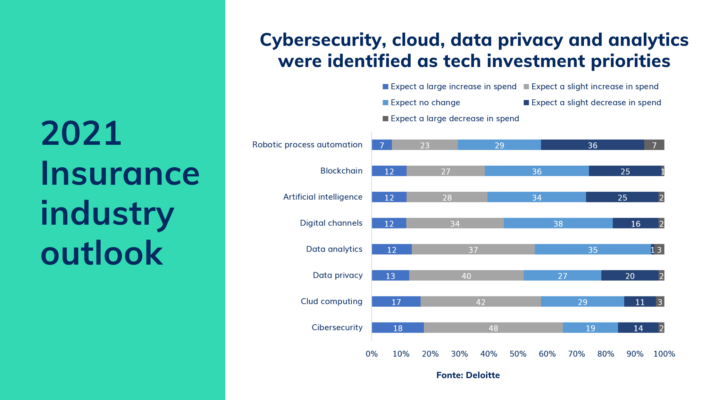Insurance, redefine decision making with data science
In our past discussions with insurance companies about data science, we have always perceived a sense of superiority by them than in other sectors. Often, at the end of a chat with an industry manager, we felt the inability to find a key that would convince them to work with data science companies like Premoneo. The problem was to convince them to do something different from their current processes and current approach to data.
Insurance, redefining decision making – the study
An interesting report published by BCG has highlighted, at least in part, why this reluctance is happening. The paper show that insurance companies are continuing to invest in the infrastructure needed to collect, organize and analyze data, either with an additive approach, focusing on how data science can incrementally improve processes and methods already used, or with an aspirational approach, focusing on building capabilities that on paper will only pay off in the long run.
Insurance, redefining the decision-making process – the doubts
Why embrace something new when you would need to partially or radically change something that has been delivering results for so long? This interesting point of view replicates in some way the speech that the CIO of an Italian company made to us some time ago. A brilliant and competent one, mind you. “Your models and software could support and facilitate the work of actuaries, but unfortunately they would not be willing to confront you or start using a different tool than the ones they have been using for decades. And where I wanted to challenge, do you know what my boss would say? That they’ve always done it right and there’s no point in taking a risk to improve something that’s already doing well.” Funny for an insurance company, not to want to take a risk.
Insurance, redefining the decision-making process – Italy vs. abroad
And the reality, in fact, apart from a few sporadic cases, tells of an insurance market that is still far from understanding the science of data to reorganize decision-making processes. Especially those that require changes in organizational culture in the medium term, requiring a holistic view of processes and a greater understanding of real-time data. And then data science is reduced to mere insight generation. But to use data in this way is to behave like an amateur cyclist, who after diligently doing one hour of spinning per week for a year, thinks he is ready to climb the Zoncolan.

On the other hand, BCG assures that the American companies that have overcome this mental hurdle have verified that data science, used in a systematic and structured manner and integrating existing processes, has led to an improvement in profit margins of between 200 and 400 basis points.
Insurance, redefining the decision-making process – the advantages
Here are the four questions we’d like to ask industry stakeholders, to help them gain courage in choosing to embark on an innovation journey with us:
– What are the “pain points” we know about business processes?
– What are the processes that have not evolved in the last decade?
– Where do we think a new approach to data can help with business challenges?
– How are companies in other industries addressing similar challenges?
The starting point is that all of the companies we’ve had the opportunity to meet with on this journey, after an assessment with our team of experts, agreed that there were problems in their processes that they were not responding to effectively with the data, tools or techniques in place.
This is the starting point for opening up to subjects like Premoneo and Artificial Intelligence to support data science. To respond effectively, proposed solutions will need to:
– Offer a sharper definition of the problem.
– Enable the use of a greater volume of data or new data sources.
– Lead to the creation of new data-driven tools.
– Foster the development of in-house technologies that are integrated into the business ecosystem.
Encapsulated in these 4 points are the reasons to embrace a new challenge and question the status quo, in search of new marginality and greater efficiency.


